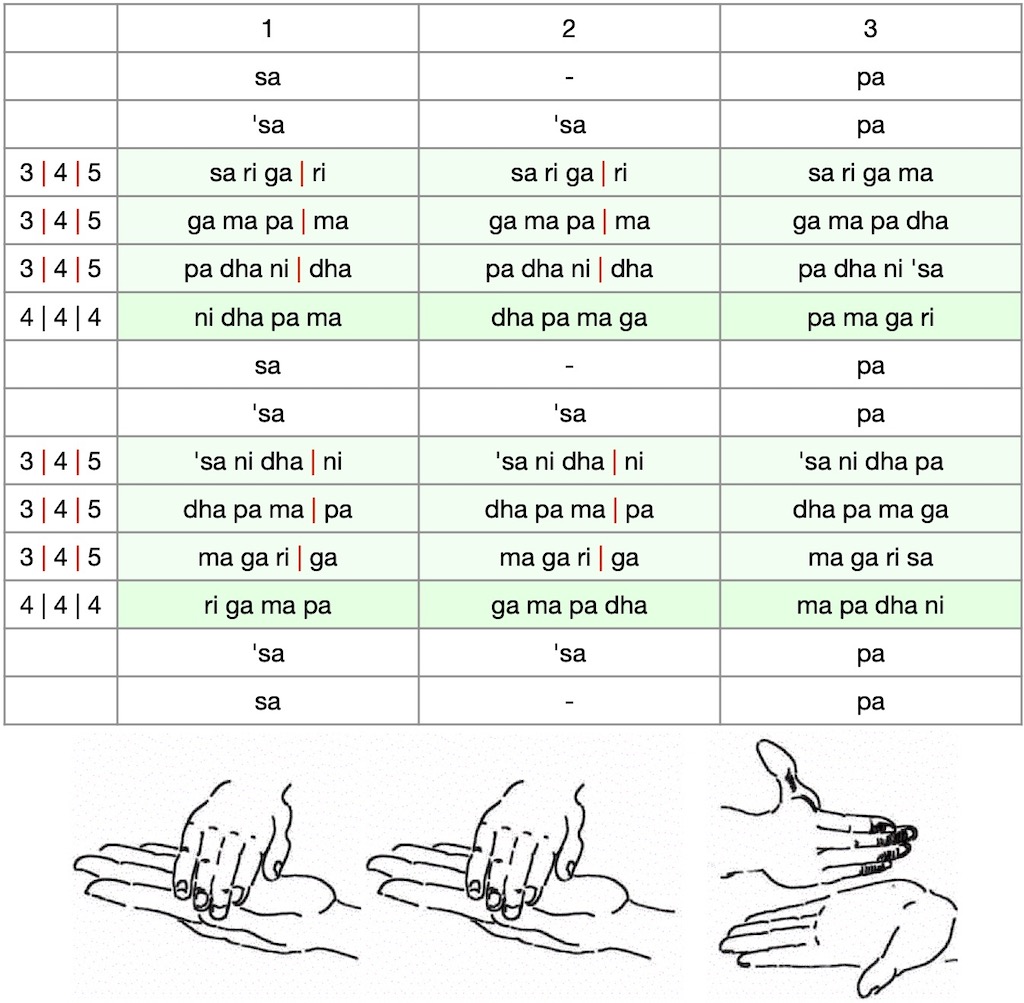
“Flow” exercises
A series of “Flow” exercises invites learners to practice all the 72 musical scales of Carnatic music (“mela” or mēlakarta rāga). It is meant to supplement the comprehensive standard syllabus (abhyāsa gānam) attributed to 16th c. composer Purandara Dasa.
Repeated practice need not be tedious; instead it instantly turns joyful whenever we remind ourselves that Indian music “is created only when life is attuned to a single tune and a single time beat. Music is born only where the strings of the heart are not out of tune.” – Mahatma Gandhi on his love for music >>
As regards “time beat” in Carnatic music, the key concept is known as kāla pramānam: the right tempo which, once chosen, remains even (until the piece is concluded). | Learn more >>
Music teachers will find it easy to create their own versions: exercises that make such practice more enjoyable. | Janta variations >>
Concept & images © Ludwig Pesch | Feel free to share in accordance with the
Creative Commons Attribution-NonCommercial-ShareAlike license >>
Tradition and change: integrity matters, even in the digital age!
In this course, new exercises are introduced with due respect for integrity – respect for a music that has evolved over several centuries (in its present concert format) and far beyond (as regards thought provoking concepts that kindle long-term immersion).
Some of the exercises and methods facilitate continuous or frequent practice among learners who struggle with multiple commitments.
So this is all about the kind of active involvement in a tradition wherein music is simply indispensable for leading a fulfilled life. This also explains why long-term commitment is compatible with socio-economic and scientific change. This calls for imagination, a fact reflected in text books that highlight the importance of manodharma sangita, a concept reaching beyond “improvisation” as understood in Western music.
We may therefore safely conclude that both commitments, learning and teaching, are by no means determined by an individual’s station in life.
For this reason, lessons may either be shared regularly and personally (by a guru, in the past largely informally within a household known as gurukulam), or without personal contact by emulating an inspiring exponent – alive or otherwise (manasa guru, manasika guru). Many musical biographers and hagiographers share a conviction that a learner’s choice for either approach – personal or indirect lessons – tells little if anything about an accomplished musician’s status.
In short, this is all about dedication and integrity, even in the digital age!
Rūpaka tāla (3 counts/syllables)
Lesson 4: “ta ki ta“- trikāla = 3 speeds
Full lesson: Practice four widely used Carnatic talas >>
a = middle octave (madhya sthayi)
‘sa = higher octave (tara sthayi)
South Indian conventions (raga names & svara notation): karnATik.com | Guide >>
The above svara pattern may be sung, hummed or practiced silently with any svara variants: those you are already familiar with (e.g. raga Mayamalavagaula, mela 15, raga Dhirasankarabharanam, mela 29, raga Mecakalyani, mela 65) or any other you want to practice.
Enjoy practicing by way of gradually getting into a state of flow: deep concentration while feeling completely absorbed by an activity.